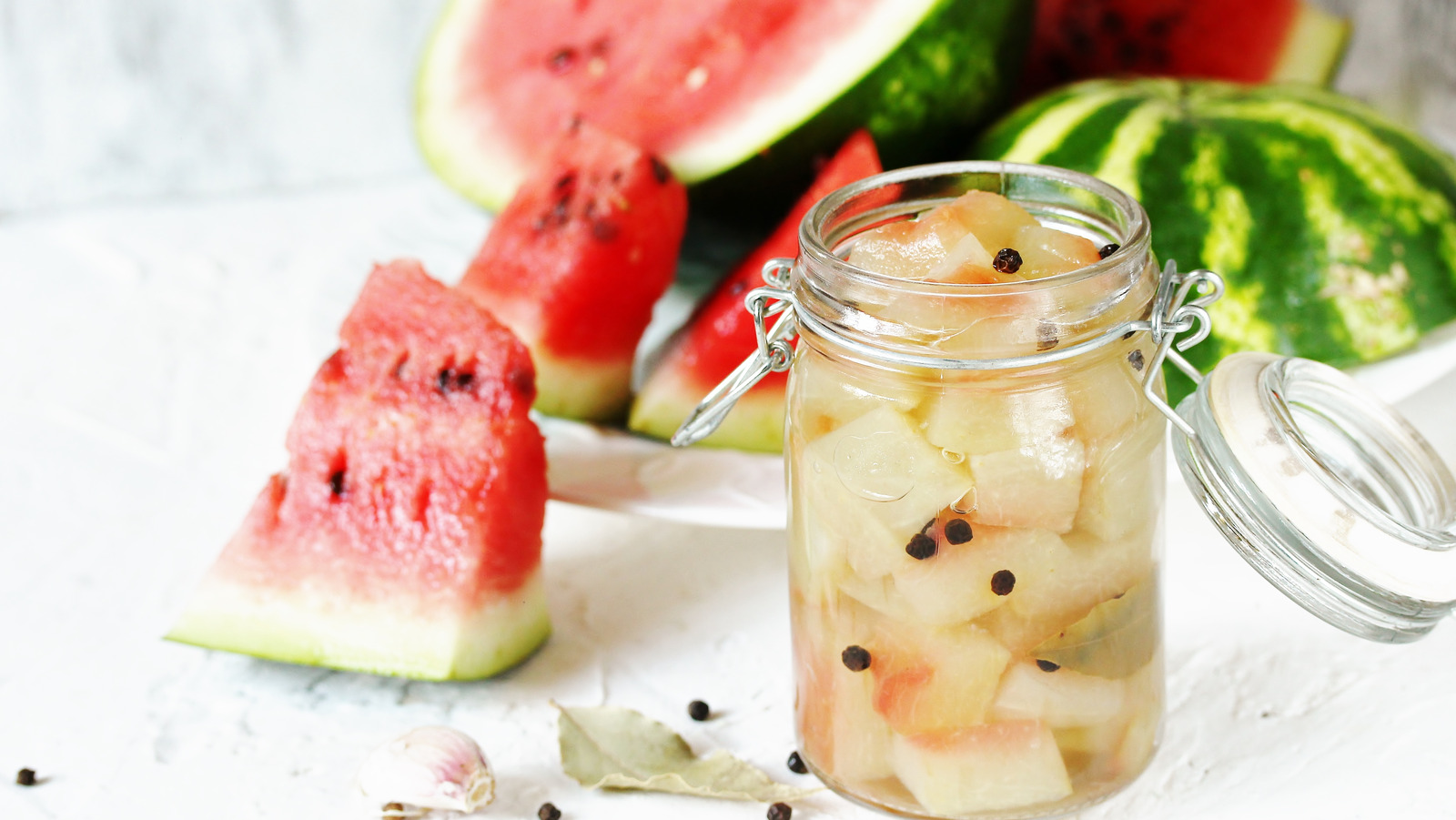Fruit rinds are the kind of thing we often just toss in the trash — or the compost bin, if we're into gardening. For years, however, extra-thrifty people have been adding extra ingredients to make more palatable, creating recipes like candied orange peels and tepache, the Mexican drink made from pineapple rind. With watermelon rind, what you get is pickles.
In Russia, German immigrants used to pickle whole watermelons, rind and all. At some point, many cooks started leaving out the rind and just pickling the flesh, but some Russian-style watermelon pickle recipes still call for leaving it on. In the 18th century, directions for preserving watermelon rind in sugar appeared in by Amelia Simmons.

This slim volume, which came out in 1797, is notable for being the first cookbook by an American-born writer to be published in this country, although we're not sure if it should also be credited with creating the first American watermelon pickles since there's no vinegar used in the recipe. Fast-forwarding a few centuries, watermelon rind pickles are now enshrined as a traditional Southern food. Old-timey they may be, but that means they're ripe for being discovered by enthusiastic young TikTok creators who've just found out what their great-grandparents knew all along: Yes, watermelon rinds can taste pretty good if you soak them in vinegar for a few days.
How to pickle watermelon rind As pickled watermelon rind isn't the kind of thing you can find in too many grocery stores, the eas.























